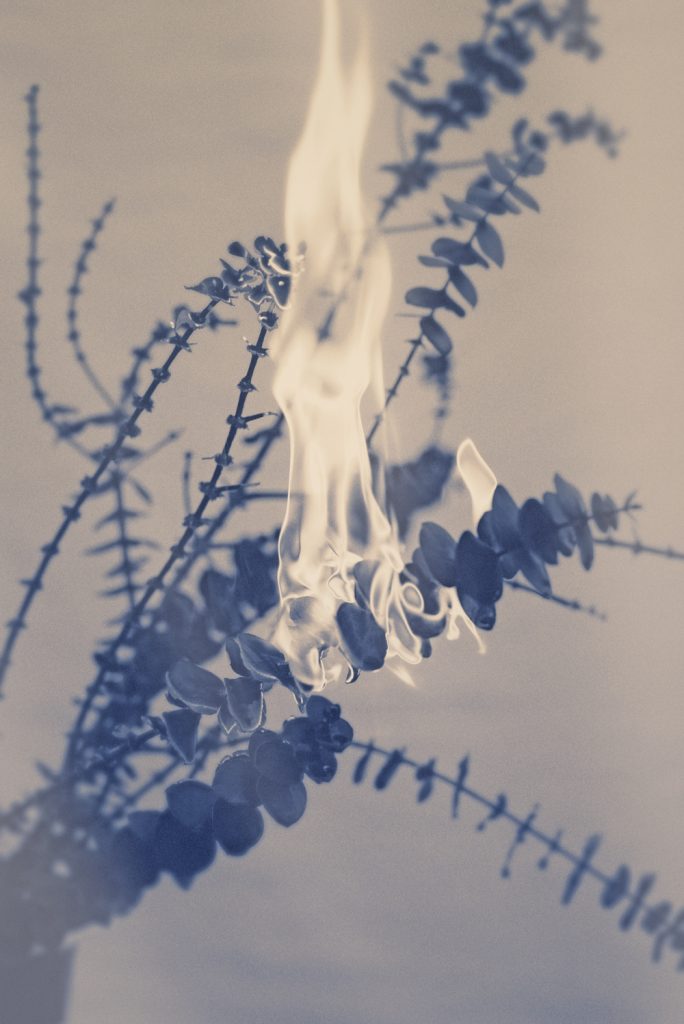One artist that constantly surprises and inspires me is Jordan Sullivan. If you aren’t yet familiar with this work, get acquainted. His photographs and prose have appeared in publications such as Dazed Digital, Dossier Journal, Twin Magazine, VICE, Third Coast, GUP, Art + Design (China), Secret Behavior, and ELLE. His work has been exhibited in solo and two-person exhibitions in Tokyo, New York, Los Angeles, and Houston. He also co-hosts an ongoing series of outdoor book fairs called Book Club, which celebrate contemporary photography publications and printed matter in beautiful outdoor spaces around Los Angeles and abroad. In short, Sullivan has had a healthy career as an artist. And he’s just getting started.
I’ve been a long-time supporter of his work and most recently, have found myself particularly drawn to his three-part Wandering Days series. Multidisciplinary in nature, Sullivan refers to these books as photo-illustrated novellas. The books included in this series are gorgeous and heartbreaking. The Young Earth, published by Peter Halpert Fine Art in 2013, is the first in the series. The other two books, An Island in the Moon and The Burial Cloud, will be published in 2015 and 2016. He was kind enough to be interviewed about his work, process, and ideas regarding art making during a particularly busy time of year.
*
What is your background as a writer and artist?
I was an athlete growing up, and many people don’t associate athletics with art, but I found athletics to be a very visceral and emotional world that in many ways informed my art later on. There’s a certain intuition an athlete has and this intuition is invaluable to my creative process. Of course there’s a team in many sports and I always was drawn to more solitary endeavors, so naturally I was drawn to writing and art.
Where do you currently live? How does this inform your work?
I live in Los Angeles in a little house in a quiet neighborhood, which is wildly different than my life in New York. I’m more alone and more isolated here, and I think that directly affects my work, which constantly explores the void, alienation, and solitude.
How does your life inform your work? Do you feel it’s separate or intermixed?
I’m always trying to express something internal, maybe it comes from me, and maybe I am trying to draw it out of a person or a place, but my work is not a diary.
Why did you begin making visual stories?
I always wrote short stories and novels and still do, so when I arrived at photography I was naturally inclined to use it as a mode of storytelling.
Can you discuss your process for your first book, The Young Earth? How did this process differ from An Island In The Moon and The Burial Cloud?
The Young Earth was very much figured out in this almost improvisational way. We went to Iceland with no map and no plan, and it just sort of developed as I shot and wrote. The Burial Cloud was much more planned out. It’s a project I’ve been trying to do for years now, and it’s nonfiction, which naturally makes much more of a labored and researched project.
I’ve noticed online you refer to these books as visual stories; do you have a hard time defining them? To me, especially with the soon to be published The Burial Cloud, they sit somewhere between fiction and nonfiction, even in terms of the photography and collaged material you have present in the books. How would you define them?
I try not to define them. I’m very bored with traditional branding. I want my work to sit in this undefined space where it isn’t quite this or that, more of an organism that keeps evolving.
I know you’re a writer, a photographer, a visual artist. Does this feel like a culmination of your artistic talents? Are there any medias you work in that are not represented in these books? If so, why have you chosen to not include them?
It’s certainly the most multimedia book project I have done recently. I wanted to create a nontraditional biography and photo book and see how I can form a story through words and pictures, but I wouldn’t say it’s a culmination that admits some sort of end or satisfaction, and I don’t think I’ll ever be satisfied with a work completely.
How does the context of a photographer differ if it’s in a gallery, online, in a book for you? Is it important for photographs to live in multiple places?
I try not to differentiate. I treat a book with as much respect as a gallery and vice versa. In some ways it just comes down to audience and volume. The majority of people who see my work see it online, which I have a bittersweet relationship with.
Why?
I like the accessibility of the internet, but of course I will always be most attracted to an object and seeing something or someone in the flesh.
As an artist, how do you distort, disrupt, or bend genre/media? Do you consciously do this in your work?
Now it is just the way I work. Each project leads me in a different direction and I just try to listen and let the work guide me. Nothing I do is process oriented or about photography or about writing. I’m interested in stories and emotions, in finding expression within this void, and I use whatever I can to create those things.
What are current / future projects you’re working on?
I have exhibitions in Copenhagen, Los Angeles, and Brussels coming up.
“Burning Eucalyptus” photograph courtesy of Jordan Sullivan from “An Island In The Moon.”




